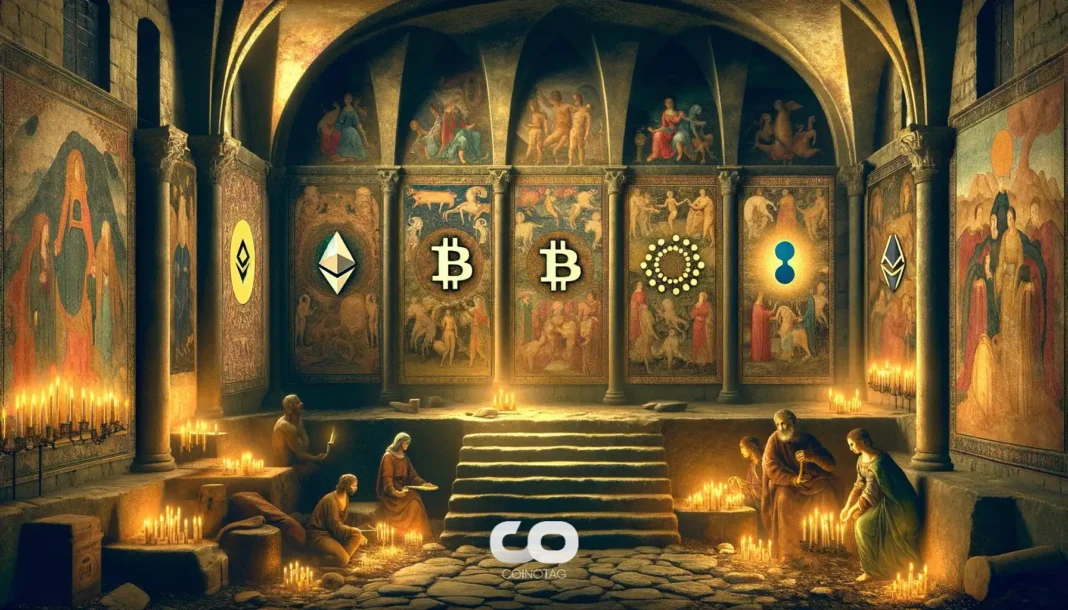| COINOTAG recommends • Exchange signup |
| 💹 Trade with pro tools |
| Fast execution, robust charts, clean risk controls. |
| 👉 Open account → |
| COINOTAG recommends • Exchange signup |
| 🚀 Smooth orders, clear control |
| Advanced order types and market depth in one view. |
| 👉 Create account → |
| COINOTAG recommends • Exchange signup |
| 📈 Clarity in volatile markets |
| Plan entries & exits, manage positions with discipline. |
| 👉 Sign up → |
| COINOTAG recommends • Exchange signup |
| ⚡ Speed, depth, reliability |
| Execute confidently when timing matters. |
| 👉 Open account → |
| COINOTAG recommends • Exchange signup |
| 🧭 A focused workflow for traders |
| Alerts, watchlists, and a repeatable process. |
| 👉 Get started → |
| COINOTAG recommends • Exchange signup |
| ✅ Data‑driven decisions |
| Focus on process—not noise. |
| 👉 Sign up → |
- Ethereum co-founder Vitalik Buterin has recently shed light on the transformative potential of Ethereum’s Layer-2 solutions.
- These advancements are poised to significantly impact the blockchain ecosystem, enhancing scalability and reducing transaction costs.
- “Layer-2 is not just a technical upgrade; it’s a cultural shift in how we perceive and utilize blockchain technology,” Buterin emphasized during a recent conference.
Discover how Ethereum’s Layer-2 solutions are revolutionizing the blockchain landscape and what it means for the future of decentralized finance.
Ethereum’s Layer-2: A Game Changer for Blockchain Scalability
Ethereum’s Layer-2 solutions, such as Optimistic Rollups and zk-Rollups, are designed to address the scalability issues that have long plagued the network. By processing transactions off-chain and only recording the final state on the main Ethereum blockchain, these solutions significantly increase transaction throughput and reduce fees. This development is crucial as the demand for decentralized applications (dApps) continues to grow, necessitating a more efficient and scalable infrastructure.
Impact on Transaction Costs and Network Efficiency
One of the most immediate benefits of Layer-2 solutions is the reduction in transaction costs. High gas fees have been a major barrier for users and developers alike, often making smaller transactions economically unfeasible. With Layer-2, users can enjoy faster and cheaper transactions, which is expected to drive greater adoption of Ethereum-based dApps. Moreover, by alleviating congestion on the main chain, Layer-2 solutions enhance overall network efficiency, making Ethereum more robust and reliable.
Layer-2 and the Future of Decentralized Finance (DeFi)
The DeFi sector stands to gain immensely from the implementation of Layer-2 solutions. As DeFi protocols rely heavily on the Ethereum network, the improved scalability and reduced costs will enable more complex and innovative financial products. This could lead to an explosion of new DeFi applications, offering users a broader range of financial services, from lending and borrowing to derivatives and insurance, all within a decentralized framework.
| COINOTAG recommends • Professional traders group |
| 💎 Join a professional trading community |
| Work with senior traders, research‑backed setups, and risk‑first frameworks. |
| 👉 Join the group → |
| COINOTAG recommends • Professional traders group |
| 📊 Transparent performance, real process |
| Spot strategies with documented months of triple‑digit runs during strong trends; futures plans use defined R:R and sizing. |
| 👉 Get access → |
| COINOTAG recommends • Professional traders group |
| 🧭 Research → Plan → Execute |
| Daily levels, watchlists, and post‑trade reviews to build consistency. |
| 👉 Join now → |
| COINOTAG recommends • Professional traders group |
| 🛡️ Risk comes first |
| Sizing methods, invalidation rules, and R‑multiples baked into every plan. |
| 👉 Start today → |
| COINOTAG recommends • Professional traders group |
| 🧠 Learn the “why” behind each trade |
| Live breakdowns, playbooks, and framework‑first education. |
| 👉 Join the group → |
| COINOTAG recommends • Professional traders group |
| 🚀 Insider • APEX • INNER CIRCLE |
| Choose the depth you need—tools, coaching, and member rooms. |
| 👉 Explore tiers → |
Security and Decentralization: Balancing Act
While Layer-2 solutions offer numerous advantages, they also present certain challenges, particularly in terms of security and decentralization. Ensuring that these off-chain transactions are secure and resistant to fraud is paramount. Additionally, maintaining the decentralized ethos of blockchain technology while implementing these solutions requires careful consideration and robust mechanisms. Vitalik Buterin has highlighted the importance of ongoing research and development to address these challenges and ensure the long-term success of Layer-2 solutions.
Conclusion
Ethereum’s Layer-2 solutions represent a significant milestone in the evolution of blockchain technology. By addressing scalability and cost issues, they pave the way for broader adoption and more innovative applications. As the blockchain community continues to explore and refine these solutions, the future of Ethereum and the broader blockchain ecosystem looks promising. Investors, developers, and users alike should keep a close eye on these developments, as they are set to shape the future of decentralized finance and beyond.
| COINOTAG recommends • Exchange signup |
| 📈 Clear interface, precise orders |
| Sharp entries & exits with actionable alerts. |
| 👉 Create free account → |
| COINOTAG recommends • Exchange signup |
| 🧠 Smarter tools. Better decisions. |
| Depth analytics and risk features in one view. |
| 👉 Sign up → |
| COINOTAG recommends • Exchange signup |
| 🎯 Take control of entries & exits |
| Set alerts, define stops, execute consistently. |
| 👉 Open account → |
| COINOTAG recommends • Exchange signup |
| 🛠️ From idea to execution |
| Turn setups into plans with practical order types. |
| 👉 Join now → |
| COINOTAG recommends • Exchange signup |
| 📋 Trade your plan |
| Watchlists and routing that support focus. |
| 👉 Get started → |
| COINOTAG recommends • Exchange signup |
| 📊 Precision without the noise |
| Data‑first workflows for active traders. |
| 👉 Sign up → |
| COINOTAG recommends • Members‑only research |
| 📌 Curated setups, clearly explained |
| Entry, invalidation, targets, and R:R defined before execution. |
| 👉 Get access → |
| COINOTAG recommends • Members‑only research |
| 🧠 Data‑led decision making |
| Technical + flow + context synthesized into actionable plans. |
| 👉 Join now → |
| COINOTAG recommends • Members‑only research |
| 🧱 Consistency over hype |
| Repeatable rules, realistic expectations, and a calmer mindset. |
| 👉 Get access → |
| COINOTAG recommends • Members‑only research |
| 🕒 Patience is an edge |
| Wait for confirmation and manage risk with checklists. |
| 👉 Join now → |
| COINOTAG recommends • Members‑only research |
| 💼 Professional mentorship |
| Guidance from seasoned traders and structured feedback loops. |
| 👉 Get access → |
| COINOTAG recommends • Members‑only research |
| 🧮 Track • Review • Improve |
| Documented PnL tracking and post‑mortems to accelerate learning. |
| 👉 Join now → |







